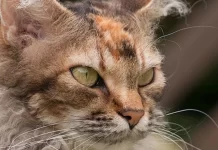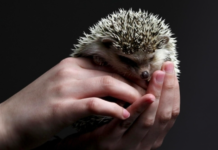Last Updated on October 11, 2023 by Fumipets
Crafting a Homemade Kitten Pacifier: A Nurturing DIY Project
Creating a kitten pacifier at home can be a valuable skill for those caring for young, motherless kittens. This DIY project provides a nurturing solution to ensure these fragile felines receive the proper care and comfort they need to thrive. A kitten pacifier, also known as a feeding tube or a syringe, allows caretakers to simulate the experience of nursing from their mother, offering sustenance and warmth. In this guide, we’ll explore the step-by-step process of crafting a homemade kitten pacifier and provide essential tips to ensure the well-being of these precious kittens.
Homemade Kitten Pacifier
Cats exhibit a variety of actions that demonstrate their steadfast adherence to past routines. When a cat kneads or treads, it reminds us of the time when they used to do the same thing to their mother’s nipples when breastfeeding, for example, to assist promote milk production.
Some kittens may also nurse in a manner like that of their mothers, as well as engage in a variety of grasping, scratching, and chewing behaviors similar to those of your cat and its mother. While these behaviors aren’t always harmful or bad signs, you could want to attempt to discourage your cat from sucking and nibbling. However, you might just want to provide them something else to comfortably suckle on than your sweater or bare arm.
A pacifier is an excellent choice. This calming device may come in a variety of shapes, but it often resembles a pillow with nipples. The nipples are for sucking, and the cat is expected to see the cushion the same way it would its mother.
Commercial pacifiers may be pricey, particularly if you purchase two or more. Thankfully, you can create a homemade kitten pacifier. It can protect your arm and save you from having to constantly launder blankets, pillows, and throws while also giving your kitty the comforting appeal of something to suckle.
What Is a Kitten Pacifier?
A kitten may be weaned from its mother using a kitten pacifier. Some kittens will benefit from one regardless of age, but it is deemed important when a kitten is taken away from its mother too soon.
A pacifier may help calm a cat down and provide a quiet atmosphere, even if the cat has been separated from its mother for some time. Also, as the owner, it may help you since it stops your cat from constantly kneading and sucking on your furniture, including your blankets, pillows, and other objects.
A pacifier may help calm anxious cats, particularly those who have just been relocated to their new home. It may calm their nerves and lessen tension and anxiety. This will simulate the sensation of being near the remainder of the litter or the mother.
Cats have the same problems with teething as humans. The first stage starts roughly two weeks after a kitten is born, while the second teething period often lasts until three months. There are a number of reasons why a newly adopted cat might profit from one of these things, including the fact that the latter also corresponds with the time you take them to their new home and away from their mother.
Moreover, a pacifier might promote trust. A kitten will always have faith in its mother; otherwise, how would it survive? Your kitten will trust you a lot more if you manage to convince it that you are its mother.

How to Make a Kitten Pacifier
A feeding bottle may serve as a basic kitten pacifier, but if you can connect something plush to the silicone teat, it will begin to resemble the form of your kitten’s mother. A toy your kitty enjoys and that smells like home will increase the likelihood that it will accept the new pacifier. About a basic pacifier:
1. Choose the Pacifier
Select from pacifiers made of silicone or latex. Plastic is a bad choice since it can endanger your cat more than it might help. Although silicone often lasts longer, latex is gentler.
Make sure the infant pacifier is clean and that the substance hasn’t solidified before recycling or using it again.
While it shouldn’t be too difficult, there should be some resistance.
2. Chosen a Blanket or Toy
Use a toy, a blanket, or anything that your cat enjoys to increase the likelihood that your kitten will take the pacifier. Even the feel of the item will be familiar to it.
A plush toy will have a mother cat-like feel about it.
3. Tie the Items Together
It could be wise to use the pacifier by itself before combining the two ingredients. Some kittens may suckle on the pacifier because they think it feels like their mother’s teat and they prefer it.
If it doesn’t work, connect the pacifier to the toy using nylon thread. Pulling on the soother while inspecting the completed product will ensure that it won’t come off.
4. Clean the Pacifier
Make sure the pacifier is clean and ready for your kitty to suckle before using it. As you were touching it and working on it, it probably became filthy.
Moreover, you need to make sure no other animals are sucking on the pacifier since the fragrance can turn your kitten off.

A Pillow with Teats
Or, you might connect many pacifiers to a beloved pillow or cushion. This is the more enticing choice of the two since it more closely resembles the mother cat in terms of appearance and sensation.
1. Choose a Pillow
Again, the probability that your cat would accept the cushion will be higher if you can choose one that he enjoys. At the very least, make an effort to make the cushion smell like the kitten or its mother. The cushion shouldn’t be overly big.
2. Add More Stuffing
The cushion has to be well packed, but it shouldn’t be too dense or firm since it might cause the pacifiers to fall inside and get lost. You will have to tie the pacifiers to the pillowcase and utilize the pressure of the pillow itself to provide the appropriate form that will encourage your kitten to suckle because you cannot glue anything since the adhesive may be quite poisonous to your cat. If an extra filling is required, add it to the cushion. If you don’t happen to have any pillow stuffing lying around the home, you may always use old sweaters and other apparel.
3. Make Holes
The most effective cushion may be made with roughly four cat teats, however you don’t have to reproduce a whole double row. Cut the holes close together but not so close together that any rips would spoil the arrangement. Make sure the perforations are somewhat smaller than the pacifier’s bulbous head as well. Make an effort to space the holes equally.
4. Add Soothers
Place sanitized soothers in the cushion. Put the pacifier head bulb through the holes you drilled. In the long term, it will also be helpful if you can tie the pacifier to the inside of the pillowcase or fasten it in another secure way. Four soothers ought to be plenty.
5. Replace Pillow Cover
Re-fasten the pillowcase. Slipcovers are preferable to those with zippers or other rough surfaces that your cat could unintentionally gnaw and suckle. Your cat may get fairly aggressive while sucking on the teats, but they should be strong enough to withstand it without the need for additional fasteners or the use of poppers or buttons.

Conclusion
Your young cat may benefit from a kitten pacifier to aid in sleep or the transfer from its previous residence to your new one. Moreover, it may ease anxiety and tension. While a pacifier is often used when a kitten, at the age of 10 weeks, is moved from its mother to a new home, some older cats may also benefit from having one of these devices.
Some cats don’t even need toys or cushions since they will just suckle on a pacifier.
But, in some circumstances, you may have to fasten the pacifier to a toy or preferred cushion. Your kitten will be more likely to explore and feed on the pacifiers if you do this. Creating your own allows you to avoid spending money on possibly costly commercial alternatives. The procedure is straightforward, involves common household goods like pacifiers, and may significantly improve a little person’s quality of life.
Questions and Answers on Making a Kitten Pacifier at Home:
What is a kitten pacifier, and why is it necessary?
A kitten pacifier is a homemade device used to feed motherless or orphaned kittens. It replicates the act of nursing, providing essential nourishment and comfort.
What materials are required to make a homemade kitten pacifier?
You’ll need a feeding syringe, a small pet-safe nipple or catheter, warm formula, and a clean, sanitized environment.
What steps are involved in creating a kitten pacifier at home?
The process includes sterilizing the materials, attaching the nipple to the syringe, and warming the formula. Then, you carefully feed the kitten, ensuring a gentle and steady flow.
How often should kittens be fed with a homemade pacifier?
Newborn kittens require frequent feedings, usually every two to three hours. As they grow, you can gradually extend the time between feedings.
What are the benefits of using a homemade kitten pacifier?
Crafting a kitten pacifier at home allows you to provide nourishment and warmth, ensuring the well-being and survival of motherless kittens. It also fosters a strong bond between caretaker and kitten.


















